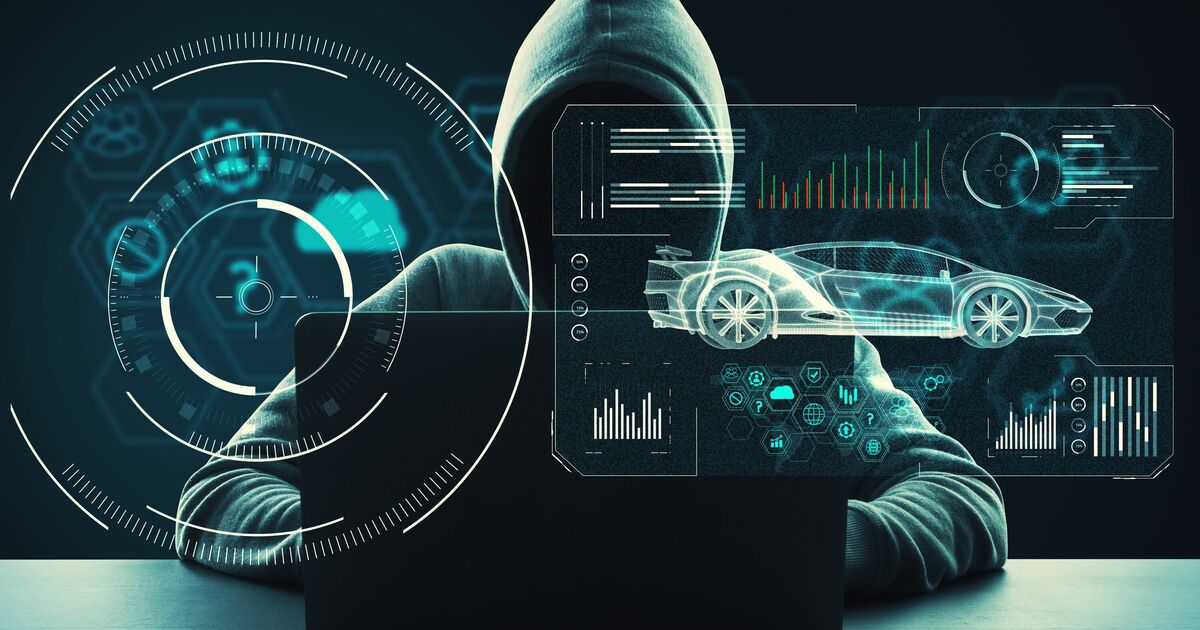Modern vehicles have evolved into highly sophisticated, software-defined platforms. From advanced driver-assistance systems (ADAS) and infotainment centers to telematics units and over‑the‑air (OTA) updates, cars today rely heavily on complex electronic control units (ECUs) and networked communication protocols. While these advancements improve convenience, safety, and performance, they also introduce new attack surfaces for malicious actors. Car hacking vulnerabilities can jeopardize passenger safety, vehicle integrity, and data privacy. This article dives into the nature of automotive cyber threats, real‑world incidents, key technical vectors, detection methods, preventive strategies, regulatory frameworks, and future outlook arming consumers, manufacturers, and security professionals with actionable insights to defend against evolving vehicle cyber risks.
Evolution of Automotive Computing
Automotive systems have progressed through distinct computing eras:
A. Proprietary ECU Islands: Early vehicles contained isolated ECUs dedicated to singular functions engine control, airbag deployment, ABS braking communicating via simple wiring harnesses.
B. CAN Bus Integration: The introduction of the Controller Area Network (CAN) bus in the 1990s enabled multiple ECUs to share data, improving coordination but co‑mixing critical and non‑critical traffic.
C. Domain Controllers: Modern architectures consolidate multiple functions powertrain, chassis, body electronics into high‑performance domain controllers, streamlining wiring but centralizing risk.
D. Ethernet Backbone: Emerging vehicles adopt automotive Ethernet for high‑bandwidth needs radar, camera feeds, infotainment expanding the attack surface beyond CAN.
E. Software‑Defined Vehicles: The latest designs treat cars as rolling data centers, where functionality is determined by software layers that can be updated OTA, necessitating robust cyber defenses.
Common Car Hacking Attack Vectors
Understanding the primary methods attackers exploit reveals the breadth of vehicle cyber risks:
A. USB and Diagnostic Ports: Attackers with physical access can upload malicious firmware or malware through On‑Board Diagnostics II (OBD-II) ports or USB interfaces.
B. Key Fob Relay Attacks: By capturing and relaying signals from key fobs, criminals can unlock and start keyless‑entry vehicles from a distance, bypassing immobilizers.
C. Telematics and Cellular Connectivity: Vulnerabilities in cellular modems or infotainment telematics allow remote injection of malicious packets, affecting ECUs over wireless links.
D. Bluetooth and Wi‑Fi Interfaces: Unsecured Bluetooth profiles or Wi‑Fi hotspots in vehicles can serve as entry points for attackers to pivot into critical vehicle networks.
E. Over‑The‑Air Update Channels: Inadequate validation of OTA firmware updates can let adversaries push malformed or malicious code to ECUs.
F. Vehicle‑to‑Vehicle (V2V) and Vehicle‑to‑Infrastructure (V2I): Emerging V2X communications protocols (DSRC, C-V2X) can be manipulated to feed false messages, triggering unintended vehicle behaviors.
Anatomy of a Car Hacking Exploit
A typical car hacking attack unfolds through a multi‑stage process:
A. Reconnaissance: The attacker identifies the vehicle’s make, model, and software versions often through social engineering, scanning, or captured telematics metadata.
B. Vulnerability Discovery: Leveraging public databases (e.g., NVD), reverse‑engineering code, or fuzzing in‑vehicle network messages to uncover weaknesses in ECUs or protocols.
C. Exploit Development: Crafting payloads or firmware patches that can trigger unintended ECU behavior ignoring safety checks, altering sensor inputs, or executing arbitrary code.
D. Delivery Mechanism: Choosing an attack vector physical port, wireless interface, phishing SMS to telematics number to implant the exploit into the vehicle.
E. Persistence and Control: Establishing a stealthy backdoor within an ECU or telematics unit to maintain access, often by embedding code in non‑volatile memory or piggy‑backing on legitimate update processes.
F. Command and Control: Remotely sending malicious commands to affected ECUs to disable brakes, alter speed readings, or leak sensitive data often timed to avoid detection.
Notable Real‑World Incidents
Several high‑profile car hacking demonstrations and breaches have underscored the urgency of automotive cybersecurity:
A. 2015 Jeep Cherokee Hack: Security researchers exploited the Uconnect telematics system’s cellular interface to remotely disable brakes, engine, and steering on a moving Jeep prompting a massive FCA recall.
B. Tesla Model S Vulnerabilities: Multiple independent security teams discovered ways to unlock doors, start the car, or control driving functions via compromised Tesla infotainment apps and Bluetooth stacks.
C. BMW ConnectedDrive Flaw: Researchers demonstrated a remote key relay attack on BMW’s ConnectedDrive system, allowing unauthorized unlocking and starting of vehicles.
D. Toyota IoT Infotainment Exploit: Security analysts revealed buffer‑overflow vulnerabilities enabling arbitrary code execution within Toyota’s head‑unit software.
E. Vehicle‑to‑Vehicle Spoofing: Academic studies showed how falsified V2V messages could trick adaptive cruise control systems into sudden braking, illustrating the perils of insecure V2X communications.
Technical Deep Dive: CAN Bus Exploits
The CAN bus remains a primary target due to its widespread deployment and lack of intrinsic security:
A. Frame Injection: Attackers with bus access can inject fabricated CAN frames, forcing ECUs to act on spurious data e.g., commanding wheel speed sensors to report zero, deactivating stability control.
B. Denial‑of‑Service (DoS): Flooding the CAN bus with high‑priority messages prevents legitimate frames from reaching ECUs, disabling critical functions like braking or engine control.
C. Message Replay: Capturing valid CAN messages and replaying them at strategic moments can produce unauthorized behaviors opening doors, toggling airbags, or resetting odometer readings.
D. ECU Firmware Tampering: Exploiting vulnerabilities in ECU bootloaders to upload modified firmware that can override safety interlocks or deactivate security features.
E. Bus Segmentation Bypass: Weak gateway ECUs intended to isolate critical CAN segments can be subverted to pass malicious messages between segments.
Detecting Car Hacking Attempts

Early detection mechanisms are crucial for mitigating vehicle cyber threats before they endanger passengers:
A. Anomaly‑Based Intrusion Detection Systems (IDS): Machine‑learning models trained on normal CAN traffic profiles flag deviations unexpected message IDs, abnormal frequencies, or impossible values.
B. Signature‑Based IDS: Databases of known malicious CAN frame patterns or attack signatures enable rapid identification of repeated exploit attempts.
C. Hardware Security Modules (HSM): Embedded within ECUs, HSMs enforce cryptographic checks on firmware and secure inter‑ECU communications, alerting on verification failures.
D. Endpoint Monitoring: Telematics units can log unusual parameter changes sudden voltage spikes, unauthorized firmware updates and transmit alerts to cloud security platforms.
E. Behavioral Analytics: Correlating vehicle telemetry with driver behavior models to detect anomalies e.g., acceleration spikes inconsistent with driver profiles triggering in‑car warnings.
Preventive Strategies and Best Practices
Hardening vehicles against cyber attacks requires a multi‑layered defense-in-depth approach:
A. Secure By Design: Implementing security considerations from the earliest stages of hardware and software architecture design embracing standards like ISO 21434 and SAE J3061.
B. Network Segmentation: Physically and logically isolating critical CAN domains (powertrain, chassis) from infotainment and telematics networks via secure gateways.
C. Cryptographic Communication: Employing message authentication codes (MACs) and encryption on CAN, Ethernet, and V2X channels to prevent unauthorized frame injection and eavesdropping.
D. Robust OTA Update Mechanisms: Ensuring all firmware delivered over the air is digitally signed, encrypted, and verified by secure bootloaders before installation.
E. Regular Security Audits and Pen Testing: Conducting periodic third‑party audits, fuzz testing, and penetration exercises to uncover emerging vulnerabilities.
F. Threat Modeling and Risk Assessments: Mapping attacker capabilities, asset values, and potential impacts to prioritize mitigations in alignment with automotive safety integrity levels (ASIL).
Regulatory and Industry Standards
Global regulations and cooperation frameworks are crystallizing automotive cyber requirements:
A. UNECE WP.29 Cybersecurity Regulation: Mandates type approval of vehicles with certified cybersecurity management systems (CSMS) and vulnerability disclosure processes.
B. ISO 21434 Road Vehicle Cybersecurity: Defines guidelines for risk management, secure development lifecycle, and post‑production monitoring for automotive electronics.
C. SAE J3061 Cybersecurity Process Framework: Offers recommended practices for integrating cybersecurity into vehicle systems engineering.
D. NHTSA Cyber Guidance: The U.S. National Highway Traffic Safety Administration issues voluntary guidelines encouraging manufacturers to adopt best practices and report incidents.
E. Legislative Proposals: Several countries are drafting laws requiring mandatory reporting of car hacking incidents, echoing data breach notification statutes in other sectors.
Consumer Awareness and Mitigation

Vehicle owners can adopt practical steps to reduce their exposure to hacking threats:
A. Update Firmware Promptly: Accept OTA updates and dealer‑issued software patches as soon as they become available to close known security gaps.
B. Secure Physical Access: Protect key fobs in Faraday pouches to prevent relay attacks, and avoid plug‑in diagnostics or aftermarket modules from untrusted sources.
C. Disable Unused Interfaces: Turn off in‑car Wi‑Fi or Bluetooth when not needed, and avoid pairing unknown devices with vehicle infotainment systems.
D. Monitor Vehicle Logs: Review event notifications in companion apps for unexplained reboots, error codes, or maintenance alerts indicating possible tampering.
E. Use Trusted Service Centers: Ensure software servicing and firmware updates occur only at authorized dealerships or certified repair shops.
Future Outlook: Securing Software‑Defined Vehicles
As the automotive industry accelerates toward fully software‑defined vehicles, cyber risk management must evolve in lockstep:
A. Zero‑Trust Architectures: Moving away from implicit trust within vehicle networks to require continuous authentication and authorization for every ECU interaction.
B. Artificial Intelligence Defenses: Deploying real‑time AI agents at the edge to detect, analyze, and neutralize emerging threats autonomously.
C. Blockchain for Provenance: Leveraging distributed ledger technology to track firmware authenticity, software dependencies, and tamper‑evident logs.
D. Industry Collaboration: Strengthening information sharing among OEMs, suppliers, and security researchers via alliances like Auto-ISAC to accelerate vulnerability disclosure and patch distribution.
E. Regulatory Harmonization: Aligning global standards to reduce compliance complexity and ensure consistent security baselines for cross‑border vehicle sales.
Conclusion
The convergence of connectivity, autonomy, and software in today’s vehicles offers unprecedented functionality and correspondingly, novel cybersecurity challenges. Car hacking vulnerabilities, if left unaddressed, can compromise safety, privacy, and trust in automotive innovation. By understanding common attack vectors, adopting rigorous detection and prevention strategies, complying with emerging regulations, and fostering collaborative threat intelligence, stakeholders across the automotive ecosystem can harden vehicles against ever‑evolving threats. Consumers, OEMs, suppliers, and regulatory bodies alike share responsibility for securing the software‑defined vehicle of the future ensuring that the promise of safer, smarter mobility is not undermined by the perils of car hacking.








